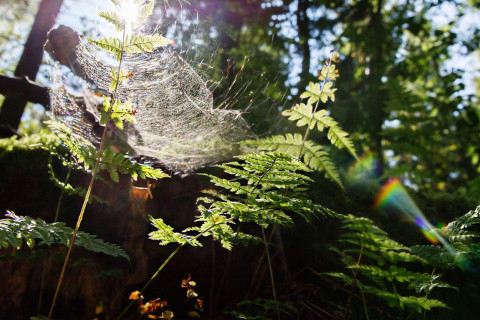The doctoral dissertation in the field of Biology will be examined at the Faculty of Science and Forestry on the Joensuu Campus.
What is the topic of your doctoral research? Why is it important to study the topic?
Populus tremula L. (European aspen) is the second most widely distributed tree species in the world. Unlike many tree species, P. tremula is dioecious, having male and female genders, and it exhibits sex-based differences not only in their reproductive functions but also in their non-reproductive features such as physiology, morphology, and protection against abiotic and biotic factors. It is regarded as a keystone species in boreal forest biodiversity because of its fundamental ecological importance for other species. In Finland alone, more than 200 other species depend on it as a source of food or as a habitat. Predicted changes in climate and the associated alteration in herbivore population dynamics may have strong impacts on its growth and defense traits, and consequently may affect its productivity, reproductive success, and distribution. This thesis demonstrates the effects of elevated temperature, CO2 concentration, ultraviolet-B (UVB) radiation and bud removal (as a proxy of tissue damage by herbivores) on the growth and defensive chemical compounds in P. tremula.
What were the key findings or observations of your doctoral research?
The findings of the thesis are presented under four sub-headings:
Elevated temperature had the strongest effect among the three studied climatic factors
Elevated temperature substantially increased the growth including height, diameter, and total biomass, and decreased the concentration of phenolics in stem bark, whole stems and leaves of P. tremula. On the other hand, elevated CO2 concentration increased the concentration of phenolics in stem bark, but elevated UVB radiation had no effect on growth and phenolics.
Effect of elevated temperature decreased over time
The plants seemed to get acclimated to the elevated temperature effect over time. As a result, the stimulating effect of elevated temperature on the diameter growth rate decreased while the concentration of condensed tannins increased in P. tremula through time.
Removal of lateral buds simultaneously increased growth and defense
Bud-removed plants had greater leaf, stem, and total biomass as compared to the ones in which the buds were not removed. In association with more growth, bud-removed individuals also contained greater concentration of flavonoids and condensed tannins in leaves as compared to the intact ones.
Elevated temperature affected the sex-based differences in growth
Elevated temperature induced the sex-based discrepancies in growth performance in P. tremula. In response to elevated temperature, growth stimulation was considerably higher in females, especially in bud-removed females. However, the sex-specific discrepancies in phenolic concentration mostly depended on the plant organ, clone, and compound in question, and were less influenced by the treatments.
How can the results be interpreted in the context of global climate change?
Overall, the findings of this thesis suggest that climate warming would stimulate the growth and decrease the concentration of defensive phenolics in P. tremula in the future, but the magnitude of the warming effect may reduce to some extent due to possible long-term temperature acclimation. Predicted warming may also offset the CO2-induced phenolic accumulation in P. tremula, and ecologically relevant UVB radiation may have little to no impact on growth and phenolic accumulation. Low-to-moderate levels of tissue damage may benefit P. tremula by increasing growth and defense simultaneously.
What were the key research methods and materials?
This thesis has been prepared based on three experimental studies. The experiments were carried out in greenhouses (Study I) and a controlled experimental field (Studies II and III). In a greenhouse experiment, the effects of elevated CO2 concentration (ambient + 320 ppm) and temperature (ambient + 1.5 ˚C) on the growth and defensive phenolic compounds in four female and four male genotypes of P. tremula have been investigated. Moreover, in a controlled field experiment, the responses of growth and phenolics due to developmentally regulated variation and lateral bud removal in six female and six male genotypes of P. tremula growing under elevated temperature (ambient + 1.4 ˚C) and UVB radiation (ambient + 26.52%) have been studied.
The doctoral dissertation of Norul Sobuj, MSc, entitled Responses of growth and defense in dioecious Populus tremula (L.) to simulated climate change and tissue damage, will be examined at the Faculty of Science and Forestry on the Joensuu Campus, Natura 100, on 2 December at 12 o’clock noon. The opponent in the public examination will be Professor Kurt Fagerstedt, University of Helsinki and the custos will be Professor Heli Peltola, University of Eastern Finland. The public examination will be held in English.
For further information, please contact:
Norul Sobuj, norul.sobuj (a) uef.fi, tel. 045 661 8281



